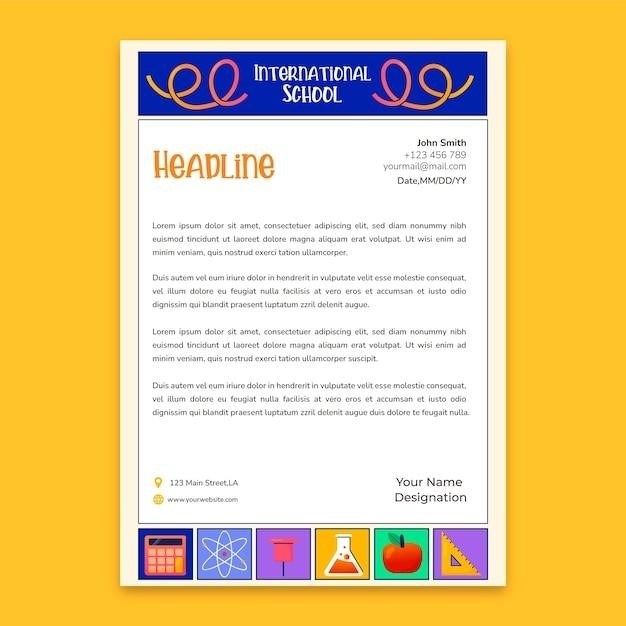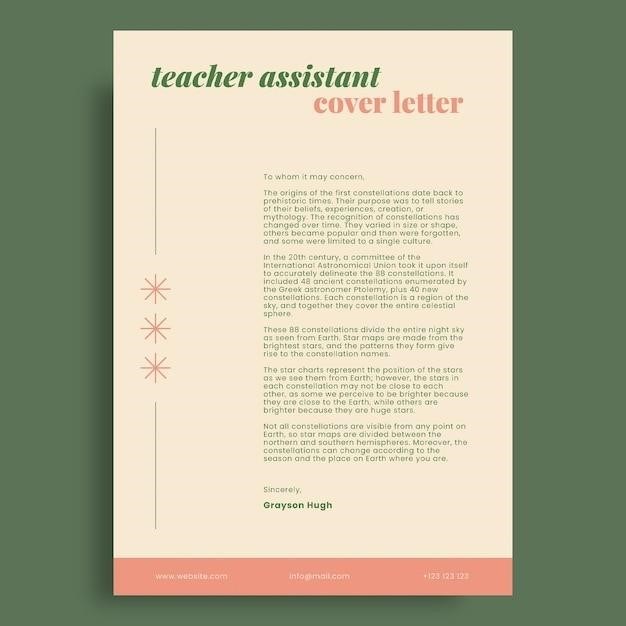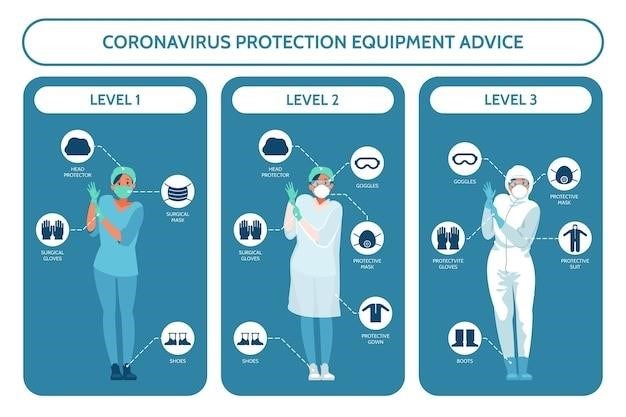Writing a Recommendation Letter for a Friend⁚ A Comprehensive Guide
This guide provides a comprehensive overview of writing a strong recommendation letter for a friend, encompassing all stages from understanding the purpose to final review and submission․
Understanding the Purpose
Before you embark on writing a recommendation letter for your friend, it’s crucial to understand the purpose behind it․ A recommendation letter is a formal document that serves as a testament to your friend’s abilities, character, and suitability for a particular opportunity․ It’s a powerful tool that can significantly influence the decision-making process․ The primary goal is to provide a persuasive and objective account of your friend’s qualifications, highlighting their strengths and experiences that align with the requirements of the opportunity․
This letter is not simply a personal endorsement but a professional evaluation․ It should be written in a clear, concise, and objective tone, avoiding overly emotional or subjective language․ The recipient of the letter, whether it’s an employer, a university admissions committee, or a scholarship selection panel, will rely on your insights to gain a comprehensive understanding of your friend’s potential and suitability for the opportunity․
Gathering Information
To craft a compelling recommendation letter, you need to gather sufficient information about your friend’s qualifications and experiences․ This is essential for providing a detailed and accurate account of their abilities and suitability for the opportunity․ Begin by asking your friend for their resume, transcripts, and any other relevant documents that highlight their achievements and skills․
Engage in a thoughtful conversation with your friend, delving into their professional goals, aspirations, and specific experiences that are most pertinent to the opportunity they are pursuing․ Ask about their strengths, weaknesses, work ethic, and any challenges they have overcome․
It’s also helpful to gather information from other sources, such as your friend’s previous employers, professors, or colleagues․ These insights will provide valuable perspectives and corroborate your own observations․ Remember to respect your friend’s privacy and obtain their consent before reaching out to others for information․
Structuring Your Letter
A well-structured recommendation letter enhances clarity and professionalism․ Follow this format to organize your thoughts and ensure a cohesive and impactful message⁚
a․ Salutation
Address the letter to the appropriate recipient, typically the hiring manager or admissions committee․ Use a formal salutation such as “Dear [Recipient Name]” or “To Whom It May Concern”․
b․ Introduction
Start by introducing yourself and your relationship to the applicant․ Briefly explain your capacity to provide a recommendation and express your enthusiasm for supporting their application․ Clearly state the purpose of the letter and the position or program for which your friend is applying․
c․ Body Paragraphs
Dedicate each paragraph to a specific aspect of your friend’s qualifications․ Highlight their skills, experiences, and achievements that are relevant to the opportunity․ Provide concrete examples and anecdotes to illustrate their capabilities and demonstrate your firsthand knowledge;

d․ Conclusion
Summarize your overall impression of your friend and reiterate your strong recommendation․ Express your confidence in their abilities and their potential to succeed in the desired role or program․
e․ Closing
End with a polite closing such as “Sincerely” or “Best regards” followed by your full name and contact information․
a․ Salutation
The salutation sets the tone for your letter and establishes a professional connection with the recipient․ It’s crucial to address the letter correctly and avoid any casual language․ Here’s a breakdown of the salutation options and how to choose the right one⁚
- “Dear [Recipient Name]”⁚ Use this formal salutation when you know the name of the hiring manager or admissions committee member․ Research the recipient’s name online or contact the organization to confirm the correct spelling․
- “To Whom It May Concern”⁚ This general salutation is appropriate when you don’t know the recipient’s name․ While it’s less personal, it ensures your letter reaches the intended party․
- “Dear Hiring Manager/Admissions Committee”⁚ This salutation is a suitable alternative if you can’t find the specific recipient’s name․ It’s concise and avoids any ambiguity․
Regardless of the salutation you choose, ensure it’s followed by a colon (⁚) and a space before starting the first paragraph of your letter․
b․ Introduction
The introduction sets the stage for your recommendation letter and introduces the reader to your relationship with the person you’re recommending․ It’s essential to establish your credibility and clearly state the purpose of the letter․ Keep the introduction concise and focused, aiming to capture the reader’s attention from the start․ Here’s a framework for crafting a strong introduction⁚
- State your name and relationship with the applicant⁚ Begin by introducing yourself and clearly stating how you know the applicant․ For example, you might write, “My name is [Your Name] and I have been [Your Relationship with Applicant] for [Duration]․”
- Highlight your expertise or experience⁚ Briefly mention your relevant experience or expertise that allows you to provide a valuable recommendation․ This could include your professional background, academic qualifications, or any specific knowledge about the applicant’s field․
- State the purpose of the letter⁚ Concisely state that you’re writing to recommend the applicant for a specific position, program, or opportunity․ Be precise and avoid any ambiguity about the reason for your recommendation․
By following these guidelines, you can craft a compelling introduction that effectively sets the context for the rest of your recommendation letter․
c․ Body Paragraphs
The body paragraphs are the heart of your recommendation letter, where you provide specific and detailed information about the applicant’s qualifications, skills, and achievements․ Each paragraph should focus on a different aspect of the applicant’s character or abilities, showcasing their suitability for the opportunity they are seeking․ Here’s a breakdown of how to structure your body paragraphs⁚
- Paragraph 1⁚ Focus on relevant skills and experience⁚ Start with a paragraph highlighting the applicant’s skills and experience that directly relate to the position or opportunity they are pursuing․ Use specific examples to illustrate their capabilities and demonstrate how they have successfully applied their skills in the past․
- Paragraph 2⁚ Highlight positive personality traits⁚ Devote a paragraph to outlining the applicant’s positive personality traits that make them a strong candidate․ Consider their work ethic, problem-solving abilities, communication skills, teamwork, or any other relevant qualities that will make them successful in the role․
- Paragraph 3⁚ Provide specific examples of achievements⁚ In this paragraph, delve into specific achievements or accomplishments of the applicant that demonstrate their abilities and potential․ Share anecdotes or stories that showcase their skills in action and provide concrete evidence of their suitability for the opportunity․
By structuring your body paragraphs in this way, you can present a well-rounded picture of the applicant’s strengths and qualifications․
d․ Conclusion
The conclusion of your recommendation letter serves as a final opportunity to reiterate your strong support for the applicant and emphasize their suitability for the position․ It should be concise, positive, and leave a lasting impression on the reader․ Here’s how to craft an effective conclusion⁚
- Restate your recommendation⁚ Begin your conclusion by clearly restating your recommendation, reaffirming your belief in the applicant’s qualifications and potential․ You can phrase this as a strong statement of support, such as “I highly recommend [Applicant’s Name] for this position” or “I am confident that [Applicant’s Name] would be a valuable asset to your team․”
- Express your confidence in their success⁚ Express your confidence in the applicant’s ability to excel in the role․ Highlight their key strengths and emphasize how they will contribute positively to the organization or opportunity․ You can use phrases like “I have no doubt that [Applicant’s Name] will thrive in this role” or “I am confident that [Applicant’s Name] will make significant contributions to your team․”
- Offer to provide further information⁚ Conclude by offering to provide further information or answer any questions the reader might have․ This demonstrates your willingness to go the extra mile to support the applicant’s candidacy․ You can say something like “I am happy to answer any further questions you may have” or “Please feel free to contact me if you need any additional information․”
A strong conclusion leaves a lasting impression and reinforces your positive recommendation․
e․ Closing
The closing of your recommendation letter serves as a final touch, adding a professional and courteous element to your communication․ It’s important to choose the right closing phrase and sign off appropriately․ Here’s a guide to crafting a professional closing⁚
- Formal Closing Phrases⁚ For a formal recommendation letter, stick to traditional closing phrases that convey respect and professionalism․ Some suitable options include “Sincerely,” “Respectfully,” “Yours truly,” or “Best regards․” These phrases are commonly used in business and academic settings and maintain a professional tone․
- Informal Closing Phrases⁚ In cases where you have a closer relationship with the recipient or the context is more informal, you might use a slightly less formal closing phrase like “Warmly,” “Best wishes,” or “With best regards․” However, it’s always best to err on the side of formality, especially when writing a recommendation letter for professional purposes․
- Sign Off⁚ Following the closing phrase, leave two lines for your handwritten signature․ Type your full name and contact information below the signature line․ This ensures the recipient can easily reach you for any follow-up questions or clarifications․
- Title (Optional)⁚ If you have a professional title or affiliation, you can include it after your name․ This adds credibility and context to your recommendation․ For example, you might write “[Your Name], [Your Title]” or “[Your Name], [Your Affiliation]․”
A well-crafted closing concludes your recommendation letter on a positive and professional note, leaving a lasting impression on the reader․
Key Elements to Include
A strong recommendation letter goes beyond simply stating positive opinions․ It provides concrete evidence and specific details that support your claims․ These key elements ensure your letter is informative and impactful⁚
- Your Relationship⁚ Clearly state your relationship with the individual you are recommending․ Be specific about the duration and nature of your connection․ This context helps the reader understand the foundation of your knowledge and insights․
- Specific Skills and Abilities⁚ Highlight the individual’s relevant skills and abilities that align with the position or opportunity they are pursuing․ Provide concrete examples and anecdotes to illustrate their competence․
- Professional Qualities⁚ Discuss the individual’s professional qualities, such as work ethic, problem-solving skills, communication skills, teamwork abilities, and leadership potential․ Use quantifiable data or specific examples whenever possible․
- Personal Attributes⁚ If appropriate, mention any personal qualities that enhance the individual’s suitability for the role․ This could include their positive attitude, perseverance, or strong work ethic․
- Future Potential⁚ Express your confidence in the individual’s future success and highlight their potential for growth and development․ This demonstrates your belief in their ability to excel in their chosen field․
- Recommendation⁚ Conclude your letter with a clear and confident recommendation․ State your belief that the individual is a strong candidate and would be a valuable asset to the organization․
By incorporating these key elements, you create a compelling and persuasive recommendation letter that effectively showcases the individual’s strengths and potential․
Writing Tips
Crafting a compelling recommendation letter requires attention to detail and a clear understanding of the recipient’s needs․ Following these writing tips will help you create a powerful and effective letter⁚
- Be Concise and Focused⁚ Keep your letter concise and focused on the most relevant information․ Avoid unnecessary details or anecdotes that do not directly support your recommendation․
- Use Strong Language⁚ Employ strong and descriptive language to showcase the individual’s strengths and abilities․ Use adjectives and adverbs that highlight their positive qualities and achievements․
- Provide Evidence⁚ Back up your claims with concrete examples and specific details that illustrate the individual’s skills and accomplishments․ This adds credibility and substance to your recommendations․
- Maintain a Professional Tone⁚ Keep your tone professional and avoid overly casual or informal language․ Ensure your letter is free of grammatical errors and typos․
- Proofread Carefully⁚ Before submitting your letter, carefully proofread it for any errors in grammar, spelling, punctuation, and formatting․ A polished and error-free letter reflects your professionalism and attention to detail․
- Request Feedback⁚ Consider asking a trusted colleague or friend to review your letter before submission․ Their feedback can help you identify areas for improvement and ensure your letter is clear and persuasive;
By following these writing tips, you can create a recommendation letter that effectively communicates your support for the individual and highlights their suitability for the position․







